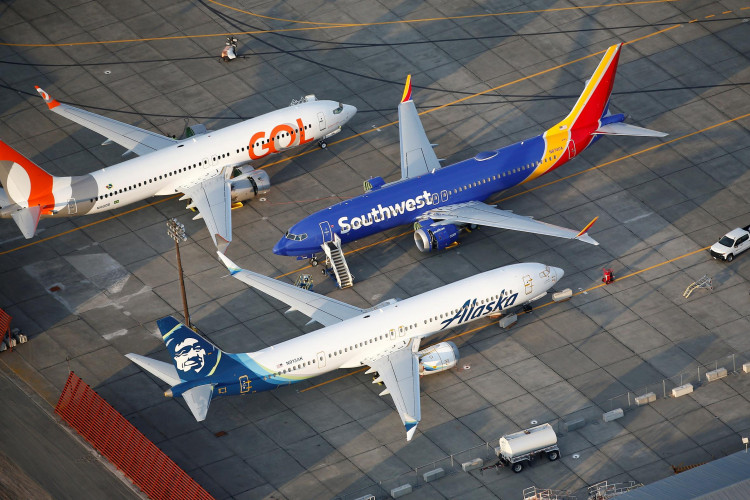The National Transportation Safety Board (NTSB) has identified missing bolts as the cause of a door plug detachment on an Alaska Airlines Boeing 737 Max 9, shedding light on a harrowing mid-air incident that prompted an emergency landing. According to the NTSB's preliminary findings, the absence of four crucial bolts allowed the door plug, which seals an unused exit, to blow off the aircraft at approximately 16,000 feet during a January 5 flight from Portland, Oregon, to Ontario, California.
The door plug's failure led to an immediate emergency response, with the aircraft, carrying 174 passengers and six crew members, safely returning to Portland. The incident has sparked a broader conversation about aircraft safety and maintenance standards, leading to a temporary global grounding of the Boeing 737 Max 9 fleet for inspections as mandated by the Federal Aviation Administration (FAA).
The NTSB report stated, "Overall, the observed damage patterns and absence of contact damage or deformation around holes associated with the vertical movement arrestor bolts and upper guide track bolts in the upper guide fittings, hinge fittings, and recovered aft lower hinge guide fitting indicate that four bolts that prevent upward movement of the MED plug were missing before the MED plug moved upward off the stop pads."
This revelation has led to legal action, with affected passengers filing a class-action lawsuit against Boeing, citing "physical injuries and emotional trauma." The lawsuit underscores the potential consequences of such safety oversights, although Alaska Airlines has not been named in the legal proceedings.
In response to the NTSB's findings, Boeing President and CEO Dave Calhoun expressed the company's commitment to accountability and improvement, stating, "Whatever final conclusions are reached, Boeing is accountable for what happened. An event like this must not happen on an airplane that leaves our factory. We simply must do better for our customers and their passengers."
Spirit AeroSystems, the manufacturer of the implicated door plug, echoed Boeing's sentiment, emphasizing their focus on safety and quality. "As we review the NTSB's preliminary report, we remain focused on working closely with Boeing and our regulators on continuous improvement in our processes and meeting the highest standards of safety, quality, and reliability," the company stated.
The incident has prompted the FAA to intensify its oversight of Boeing's manufacturing processes, with FAA chief Mike Whitaker assuring increased scrutiny. "We will have more boots on the ground closely scrutinizing and monitoring production and manufacturing activities," Whitaker informed a House panel, highlighting the agency's proactive approach to ensuring aircraft safety.
This incident adds to the series of challenges faced by Boeing's 737 Max series, previously marred by two fatal crashes involving the Max 8 model. As Boeing strives to restore confidence in its aircraft, the industry watches closely, recognizing the paramount importance of rigorous safety standards and the far-reaching implications of any lapse.






